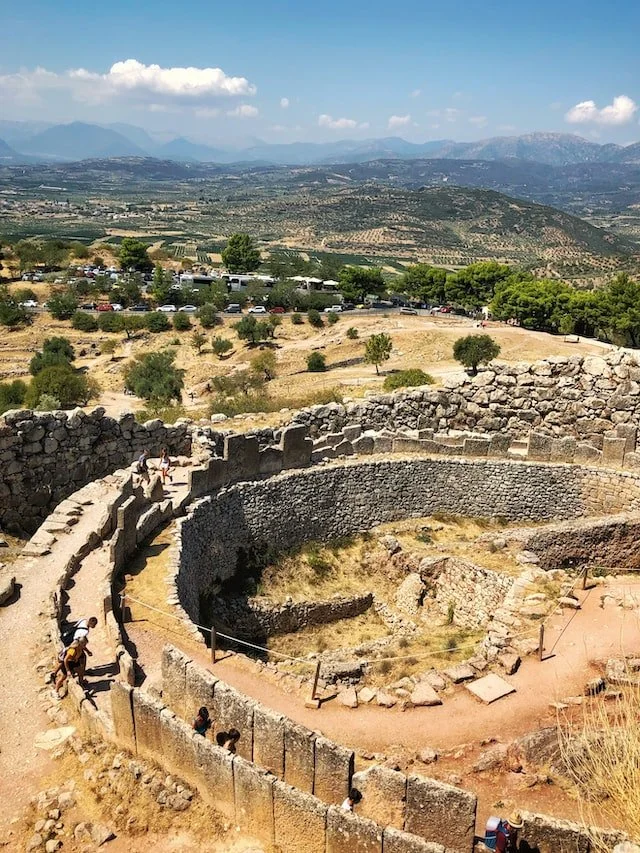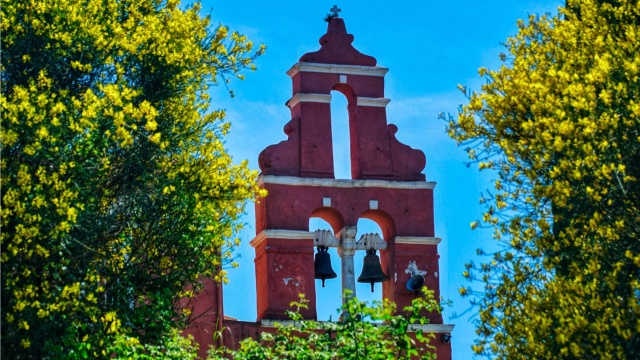Ancient Greece was the home of a fascinating civilization. And it's one that continues to have significant effects on our culture and institutions to this day. From language to literature to law to philosophy, ancient Greek ideas have changed the course of history in a way that's completely out of proportion with the relatively small country they came from.
If you want to see the relics of ancient Greek civilization today, there are some sites you simply have to visit. And yes, to see the best of them, you'll want to go to Greece. But among other things, the ancient Greeks were great travelers, so the ruins of this world-changing people are scattered across the Mediterranean and beyond.
Until somebody invents a time machine, these sites are probably as close as you're going to get to visiting ancient Greece for yourself. So add these stunning locations to your destination bucket list and start planning your trip back in time.
The Acropolis, Athens
There are no prizes for guessing where we’re going first. When you're in search of ancient Greek ruins, there's really no better place to start than in the capital of modern Greece, Athens.
Athens was one of the most powerful of the many Greek city-states during the heyday of ancient Greece, and it’s from Athens that many of the most familiar parts of ancient Greek culture come. Names like Pericles, Aristotle, Socrates, and Plato all lived in Athens, and the modern concept of democracy owes a lot to ancient Athenian politics, too.
Nowadays, Athens is a big, bustling, modern city, but the traces of the ancient world are absolutely everywhere here. And one of the most striking and iconic ancient Greek sites in the world is the Acropolis of Athens.
The Acropolis is a huge limestone outcropping that was, in ancient times, the site of several important temples, including the Parthenon. The most famous temple on the Acropolis, the Parthenon, was built to honor Athena, Athens' patron goddess. It's an absolutely stunning building, even in its ruined state.
But the Acropolis isn't just about the Parthenon. There are plenty of other ruins here to explore and admire. So take your time strolling around this remarkable site and soaking up all 2,500 years of history.
As you explore this complex of temples and theaters, you'll be following in the footsteps of some of the most famous philosophers and politicians in history. And you also get incredible views over the modern Greek capital.
You could easily spend the whole day exploring the Acropolis complex, and it’s better to travel light when you do. Drop off your bags at a Bounce luggage storage in Athens to make the most of your trip.
Temple of Apollo, Delphi, Greece
The Temple of Apollo at Delphi was one of the most important religious sites in the ancient world. The ancient Greeks believed that this temple was the center of the earth, and it was here that they consulted the Oracle of Delphi, a priestess who was said to be able to commune with the gods.
This made Delphi an incredibly important site for Greek politics and culture. If you wanted to know what the gods thought about a political decision, you would come to Delphi and ask their opinion. Major events in ancient Greek history often revolved around what happened (or didn't happen) at this temple.
Ancient Greek mythology was the basis for subsequent Roman mythology, and these ancient stories continue to fascinate people to this day. There are few better places to learn more about the religious life of ancient Greece than at this beautiful and atmospheric location.
Nowadays, visitors can explore the ruins of the Temple of Apollo, as well as several other buildings that made up the sanctuary at Delphi. These ruins sit on the side of a stunning mountain landscape, making Delphi one of the most picturesque ancient sites in Greece.
Delphi is also home to one of the best-preserved ancient Greek theaters in the world. This theater was used for religious ceremonies and festivals, as well as for plays and other performances. And it's still used today for cultural events and concerts. So if you're lucky, you might catch a performance when you visit.
Mycenae, Peloponnese, Greece
The city of Mycenae was once one of the most important centers of power in ancient Greece. It was the capital of a wealthy kingdom that dominated much of the Peloponnese peninsula. And it was from Mycenae that the legendary King Agamemnon led the Greek armies to victory against the city of Troy.
The city's wealth and power are evident in its ruins, which include a massive fortress (known as the 'citadel') and several grandiose tomb buildings. These tombs were designed to impress, and they certainly do that even today.
Mycenae was at its height during the Bronze Age, between around 1600 and 1100 BC. But it was eventually abandoned and fell into ruin. Today, Mycenae is one of the most important archaeological sites in Greece, and it's a place that every history lover should visit.
Kameiros, Rhodes, Greece
The ancient city of Kameiros was one of three major cities on the island of Rhodes in the Aegean Sea. It was an important center of trade and culture, and it was known for its impressive defensive walls.
These days, not much is left of the city itself. But you can still see the foundations of many of the buildings, as well as the city's defensive walls. And if you climb to the top of the acropolis, you'll be rewarded with stunning views over the surrounding countryside.
Kameiros was founded by the Dorians, who were one of the main groups of people who settled in Greece during the Bronze Age. The Dorians were known for their military prowess, and Kameiros was one of their most important strongholds.
If you're interested in ancient Greek history, Kameiros is definitely worth a visit. It's a fascinating site that gives you a real sense of what life was like in the Bronze Age.
Paestum, Italy
While the most impressive relics of ancient Greece can be found, unsurprisingly, in Greece itself, that doesn't mean the Greeks didn't travel. Greek traders spread all over the Mediterranean, bringing with them art and culture and religious beliefs from their homeland, and the Greeks established several colonies in different countries throughout southern Europe and North Africa.
One of these colonies was Paestum, in southern Italy. The city was founded by Greek settlers in the late 7th century BC, and it became an important center of trade and culture.
The ruins of Paestum are some of the best-preserved examples of ancient Greek architecture outside of Greece itself. And they provide a fascinating insight into the lives of the Greeks who lived there.
The most impressive buildings at Paestum are its three huge temples, which were dedicated to the Greek gods Zeus, Hera, and Athena. These temples are known as 'Doric' temples because they were built in the Doric style that was popular in mainland Greece at the time. They're incredibly well preserved, and they're definitely worth a visit if you're interested in ancient Greek architecture.
The city of Paestum was eventually abandoned, and it fell into ruin. But its ruins were rediscovered in the 18th century, and today it's a popular tourist destination.
Miletus, Turkey
The ancient city of Miletus was once one of the most important trading hubs in the Mediterranean. It was located on the coast of what is now Turkey, and it was a key stopping point for ships traveling between Greece and Egypt.
Miletus was also an important center of learning. The city was home to a famous school of philosophy, and it was here that the Milesian school of thought emerged. This school had a major impact on the development of Western philosophy, and it's still studied by scholars today.
Nowadays, visitors can explore the ruins of Miletus, which include an impressive theater and several temples. You can also see the remains of the city's defensive walls, which date back to the 6th century BC.
Ephesus, Turkey
Ephesus was once one of the largest and most prosperous cities in the ancient world. It was located on the coast of what is now Turkey, and it was an important center of trade and culture.
The city was also home to a famous temple dedicated to the goddess Artemis. This temple was one of the Seven Wonders of the Ancient World, and it attracted visitors from all over the Mediterranean.
Today, visitors can explore the ruins of Ephesus, which include the remains of several temples, a theater, and a stadium. You can also see the city's defensive walls, which date back to the 4th century BC.
Sagalessos, Turkey
Sagalessos is an ancient city that was once located in what is now Turkey. The city was founded by Greek settlers in the 4th century BC.
The city, which was a significant trade center, was eventually abandoned, and it fell into ruin. But its ruins were rediscovered in the 20th century, and today they're a popular tourist destination.
The most impressive ruins at Sagalessos are its theater and its agora, or marketplace. You can also see the remains of several temples, including a temple dedicated to the goddess Artemis.
Empuries, Spain
While not the most impressive ruins on this list, the ancient city of Empuries on Spain's east coast is worth a visit if you're in the area. This trading post is a testament to just how far the voyages of the Greeks took them, all the way to the Iberian Peninsula.
This Greek colony was later settled by the Romans as they became the dominant power in the Mediterranean. However, traces of the original Greek settlement still remain here and there, making this a fascinating place to explore.
Plus, the Greeks couldn't have picked a much more spectacular location for the city. The expansive views of the Mediterranean and the coast of Catalonia make this ancient site worth a visit all by themselves.
Cyrene, Libya
The ancient city of Cyrene was once one of the most important cities in the Mediterranean. It was located in what is now Libya, and it was another significant hub of trade and culture.
Cyrene was also an important center of learning. The city was home to a famous school of philosophy, and it was here that the Cyrenaic school of thought emerged. This school had a major impact on the development of Western philosophy, and it's still studied by scholars today.
Today, visitors can explore the ruins of Cyrene, which include an impressive theater and several temples. You can also see the remains of the city's defensive walls, which date back to the 4th century BC.
If you're interested in ancient history, Cyrene is definitely worth a visit. It's a fascinating site that gives you a real sense of what life was like in the ancient world.
Parthenon Marbles, United Kingdom
Ancient Greek explorers and traders made it all the way to the southern coast of England, but they didn't build any colonies or lasting monuments there. However, the British Museum in central London holds one of the most significant artifacts still remaining from ancient Greece.
The Parthenon Marbles are a collection of sculptures that were once part of the temple of Athena on the Acropolis in Athens. The temple was built in the 5th century BC, and it's one of the most iconic buildings from the ancient world.
The Parthenon Marbles were brought to England by Lord Elgin in the early 19th century, and they've been on display at the British Museum ever since. If you're interested in seeing some of the most famous pieces of Ancient Greek art, this is definitely the place to go.













